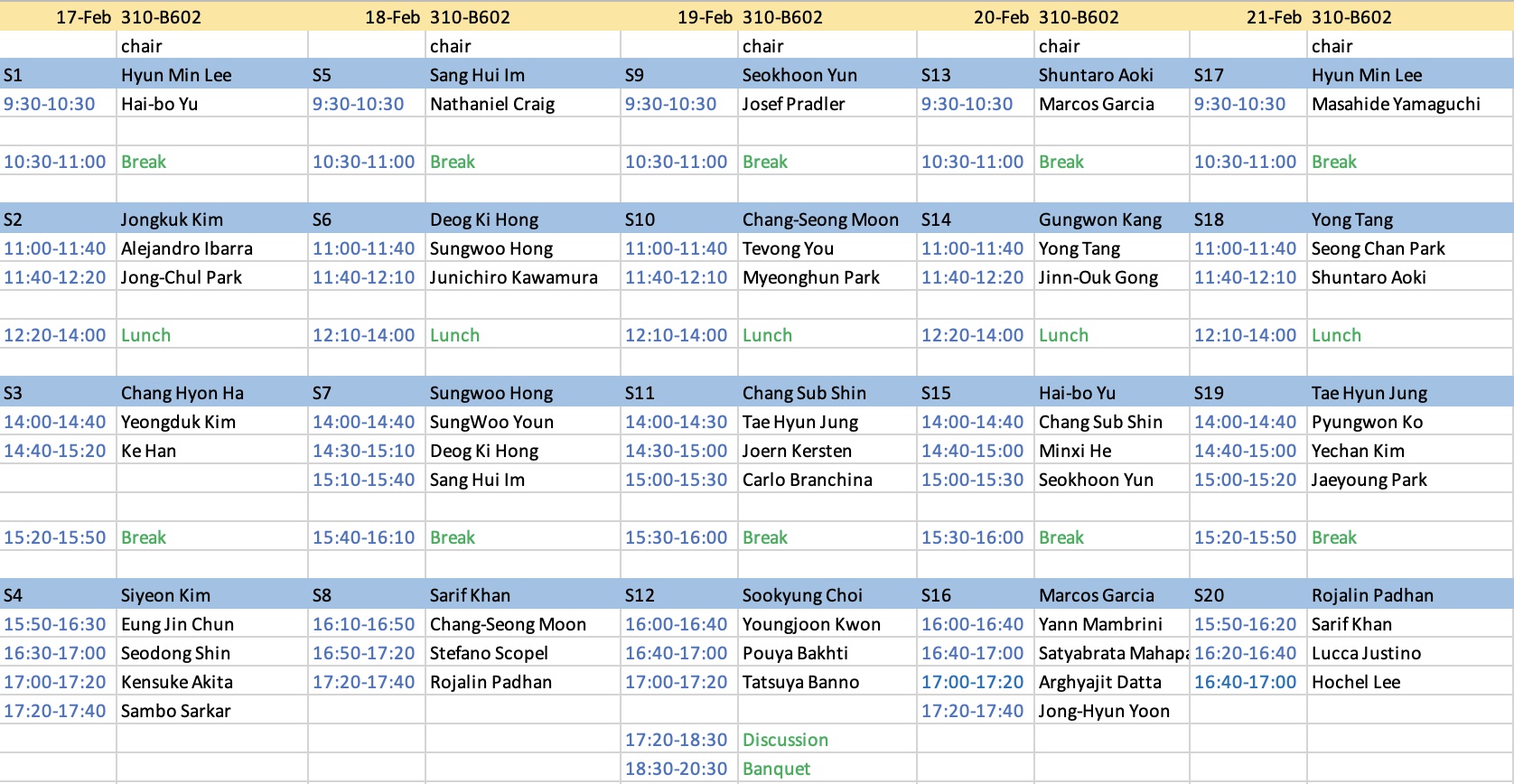2025 CAU-IBS Beyond the Standard Model Workshop
Chung-Ang University
The 2025 Chung-Ang University Beyond the Standard Model (CAU BSM) Workshop is the fifth international meeting on Physics Beyond the Standard Model (Higgs, Dark Matter, Neutrino, Axion, Flavor, Inflation, Gravitational Waves) in Chung-Ang University, Korea. The aim of the BSM Workshop is to discuss interesting current topics and initiate the collaboration between experts and participants working on BSM physics in the globe. The fifth workshop will be held as the joint efforts between CAU and Center for Theoretical Physics of the Universe in Institute for Basic Science. Registered participants are supposed to attend the workshop only in person. We hope that the CAU workshop is to keep the community moving with lively discussion and participation.
===
Time Table

Zoom links
One talk in S5(Tue) and two talks in S16(Thu) will be given on zoom. Here are the zoom links for them.
S5(Feb 18, Tue):
Topic: CAU-IBS BSM workshop
Time: Feb 18, 2025 09:30 AM Seoul
Join Zoom Meeting
https://cau.zoom.us/j/4611373590?pwd=C3OWP8qRgZevqBdXFQj3ndcFgsILIm.1&omn=87403017731
Meeting ID: 461 137 3590
Passcode: CAUBSM25
---
S16(Feb 20, Thu):
Topic: CAU-IBS BSM workshop
Time: Feb 20, 2025 04:00 PM Seoul
Join Zoom Meeting
https://cau.zoom.us/j/4611373590?pwd=C3OWP8qRgZevqBdXFQj3ndcFgsILIm.1&omn=82511261714
Meeting ID: 461 137 3590
Passcode: CAUBSM25
---
Invited speakers
Eung Jin Chun (KIAS)
Nathaniel Craig (UCSB)
Marcos Garcia (Mexico Univ)
Jinn-Ouk Gong (Ewha Womans Univ)
Ke Han (Shanghai Jiao Tong Univ)
Deog Ki Hong (PNU)
Sungwoo Hong (KAIST)
Alejandro Ibarra (TUM)
Sang Hui Im (IBS-CTPU-PTC)
Tae Hyun Jung (IBS-CTPU-PTC)
Yeongduk Kim (IBS-CUP)
Pyungwon Ko (KIAS)
Youngjoon Kwon (Yonsei)
Yann Mambrini (IJCLab, Orsay)
Chang-Seong Moon (KNU)
Jong Chul Park (CNU)
Myeonghun Park (Seoultech)
Seong Chan Park (Yonsei)
Josef Pradler (Vienna Univ)
Stefano Scopel (Sogang Univ)
Chang Sub Shin (CNU)
Seodong Shin (JBNU)
Yong Tang (UCAS)
Masahide Yamaguchi (IBS-CTPU-CGA)
Tevong You (King's College London)
SungWoo Youn (IBS-CAPP)
Hai-Bo Yu (UC Riverside)
Seokhoon Yun (IBS-CTPU-PTC)
---

Group photo (Day 1)
Group photo (Day 2)
Banquet place(2/19)

===
Information
The fourth series: 2024 CAU BSM Workshop
The third series: 2023 CAU BSM Workshop
The second series: 2022 CAU BSM Workshop
The first series: 2021 CAU BSM Workshop
CAU Department of Physics: http://physics.cau.ac.kr
CAU THEP Group: https://sites.google.com/site/cautheplab
CAU HEP Center: https://hep.cau.ac.kr